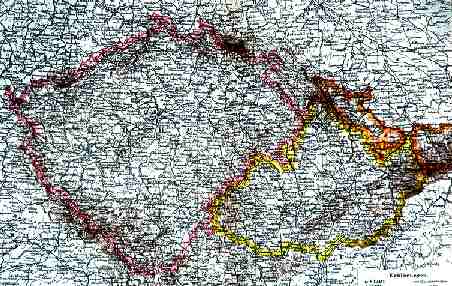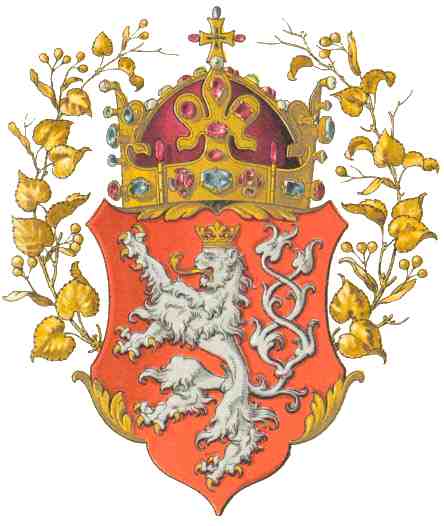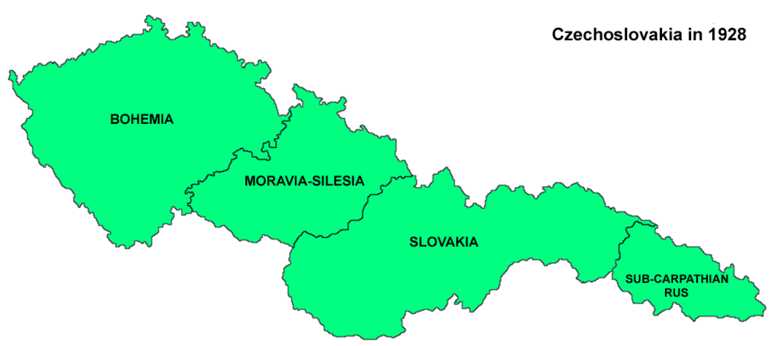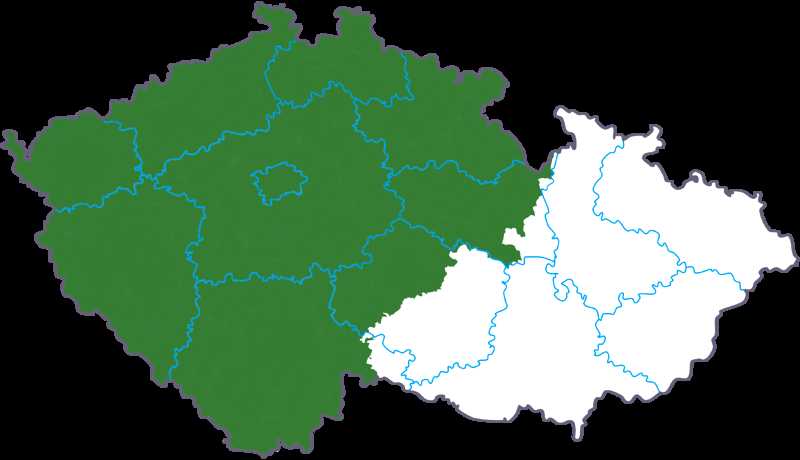|
BOHEMIA
|
|||
|
HOME | BIOLOGY | FILMS | GEOGRAPHY | HISTORY | INDEX | INVESTORS | MUSIC | SOLAR BOATS | SPORT |
|||
|
Bohemia (Czech: Čechy; German: Böhmen) is a historical region in central Europe, occupying the western and middle thirds of the Czech Republic. It has an area of 52,750 km˛ and 6.25 million of the country's 10.3 million inhabitants.
Bohemia is bordered by Germany to the southwest, west, and northwest, Poland to the north-east, the Czech historical region of Moravia to the east, and Austria to the south. Bohemia's borders are marked with mountain ranges such as the Šumava, the Ore Mountains, and the Giant Mountains within the Sudeten mountains.
Note: In the Czech language there is no distinction between adjectives referring to Bohemia and the Czech Republic, i.e. český means both Bohemian and Czech.
Historical map with Bohemia proper outlined in pink, Moravia in yellow, and Habsburg Silesia in orange
HistoryAncient Bohemia
Roman authors provide the first clear reference to this area as Boiohaemum, Germanic for "the home of the Boii," a Celtic people. As part of the territory often crossed during the Migration Period by major Germanic and Slavic tribes, the area was settled from the 1st century BC by Germanic (probably Suebic) peoples including the Marcomanni. After their migration to the southwest, they were replaced around the sixth century by the Slavic precursors of today's Czechs.
Coat of arms of the King (and Kingdom) of Bohemia
Přemyslid dynasty
After freeing themselves from the rule of the Avars in the seventh century, Bohemia's Slavic inhabitants came (in the ninth century) under the rule of the Přemyslid dynasty, which continued until 1306. With Bohemia's conversion to Christianity in the ninth century, close relations were forged with the East Frankish kingdom, then part of the so-called Carolingian empire, later the nucleus of the Holy Roman Empire of which Bohemia was an autonomous part from the tenth century.
The first to use the title of "King of Bohemia" was Boleslav I after 940, but his heirs again used the title of duke. The title of king was granted to the Přemyslid dukes Vratislav II (1085) and Vladislav II (1158), and became hereditary (1198) under Ottokar I. His grandson Ottokar II (king from 1253–1278) founded a short-lived empire which covered modern Austria. The mid-thirteenth century saw the beginning of substantial German immigration as the court sought to replace losses from the brief Mongol invasion of Europe in 1241. The Germans settled primarily along the northern, western, and southern borders of Bohemia, although many lived in towns throughout the kingdom.
Bohemia within Czechoslovakia in 1928
Twentieth century
After World War I, Bohemia became the core of the newly-formed country of Czechoslovakia, which combined Bohemia, Moravia, Austrian Silesia, and the Northern parts (Highlands) of Hungary into one state. Under its first president, Tomáš Masaryk, Czechoslovakia failed to become a liberal republic, in the sense of granting equal rights to all ethnicities. Rather, this interwar state, dominated by the Czechs, oppressed its German and Slovak minorities. In response, the Germans of the Sudentenland, who had asked to be united with Austria in 1919, sought to join Germany in the 1930s, a policy which was supported by Hitler in emulation of President Wilson's principles of the right of self-determination of ethnic minorities.
Following the Munich Agreement in 1938, the border regions of Bohemia inhabited predominantly by ethnic Germans (the Sudetenland) were annexed to Nazi Germany; this was the single time in Bohemian history that its territory was divided. The remnants of Bohemia and Moravia were then annexed by Germany in 1939, while the Slovak lands became Slovakia. From 1939–1945 Bohemia (without the Sudetenland) formed with Moravia the German Protectorate of Bohemia and Moravia (Reichsprotektorat Böhmen und Mähren). After World War II ended in 1945, the vast majority of remaining Germans were expelled through the Beneš decrees. The brutal expulsion of over three million German civilians was accompanied by mass murder on a massive scale, resulting in almost 200,000 victims. To this day the Czech government refuses to repeal the Benes decrees.
Bohemia within the Czech Republic today (green)
Beginning in 1949, Bohemia ceased to be an administrative unit of Czechoslovakia, as the country was divided into kraje. In 1989, Agnes of Bohemia became the first saint from a Central European country to be canonized by Pope John Paul II before the "Velvet Revolution" later that year. After the dissolution of Czechoslovakia in 1993 (the "Velvet Divorce"), the territory of Bohemia became part of the new Czech Republic.
The Czech constitution from 1992 refers to the "citizens of the Czech Republic in Bohemia, Moravia and Silesia" and proclaims continuity with the statehood of the Bohemian Crown. Bohemia is not currently an administrative unit of the Czech Republic. Instead, it is divided into the Prague, Central Bohemian, Plzeň, Karlovy Vary, Ústí nad Labem, Liberec, and Hradec Králové Regions, as well as parts of the Pardubice, Vysočina, South Bohemian and South Moravian Regions.
REFERENCE
Solar Cola drinkers care about planet earth
.. Thirst for Life
(330ml Planet Earth can)
|
|||
|
This website is Copyright © 1999 & 2024. The bird logo and name Solar Navigator are trademarks. All rights reserved. All other trademarks are hereby acknowledged. Max Energy Limited is an educational charity.
|




